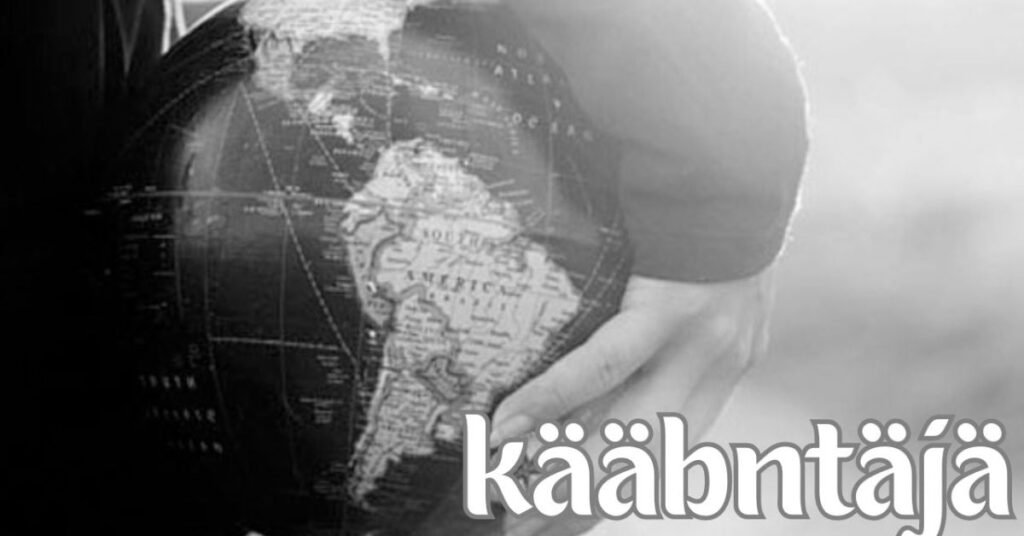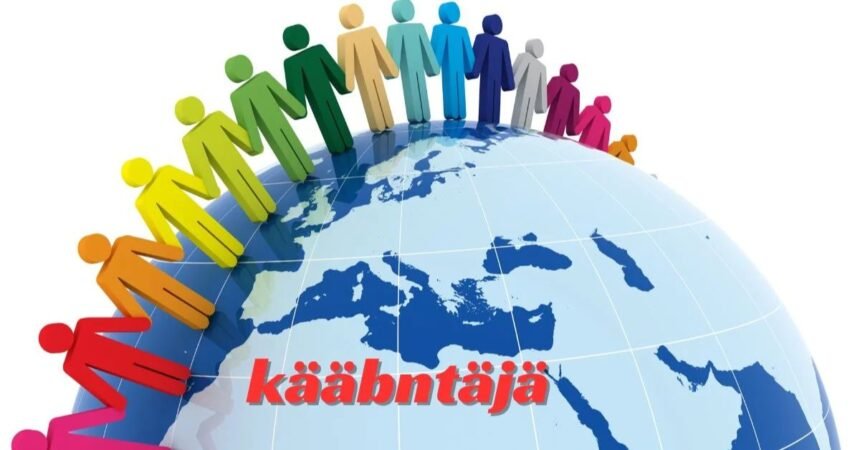Introduction
In an increasingly interconnected world, the ability to communicate across languages has become indispensable. Translation plays a vital role in breaking down language barriers, enabling people, businesses, and governments to connect globally. The Finnish term kääntäjä refers to both human and machine translators, crucial players in this process.
Understanding how kääntäjä services work, their importance, and the challenges faced in the translation field will equip businesses and individuals with the knowledge to communicate effectively across cultures. In this article, we will explore what a kääntäjä is, its benefits, real-world applications, and more.
Detailed Explanation of Key Concepts
What is Kääntäjä?
The word kääntäjä means “translator” in Finnish. It covers both human translators and machine translation software used to convert text or speech from one language to another. Translators ensure the correct interpretation of content, making communication possible between people who speak different languages.
Human Translators
Human translators are professionals fluent in multiple languages who interpret meaning and context beyond the literal translation of words. They handle complex translations that machines often struggle with, such as idiomatic expressions or highly specialized language.
Machine Translators
Machine translators, like Google Translate or DeepL, use AI algorithms to quickly translate large volumes of text. While they can be helpful for general understanding, they often lack the nuanced understanding that human translators offer.
Certified Translators
Certified translators specialize in official translations, often required for legal documents, immigration papers, or contracts. Certification guarantees accuracy and reliability, especially in legal and business contexts.
Types of Translation Services
Different types of translation services cater to various needs:
- Document Translation: Converting written materials from one language to another.
- Interpretation: Translating spoken language in real time.
- Localization: Adapting content to suit the cultural and linguistic context of a specific region.
- Technical Translation: Specialized translation for industries like law, medicine, and engineering.
The Role of Kääntäjä in Communication
Kääntäjä services act as a bridge between people, companies, and governments. Whether it’s a business expanding into foreign markets, students accessing international research, or governments negotiating treaties, translation makes global communication possible.
Importance and Benefits of Kääntäjä
Breaking Language Barriers
In the digital age, language is no longer a barrier to global interaction. Kääntäjä services enable businesses to market products internationally, educational institutions to share research, and governments to collaborate on global issues. Without accurate translation, communication breaks down, and opportunities are lost.
Enhancing Global Business
International businesses rely on translation to reach broader markets. Marketing campaigns, legal contracts, and customer service need to be accessible in local languages. An accurate translation can enhance brand reputation and build trust with foreign audiences.
Supporting Education and Knowledge Exchange
Academic research often originates in different parts of the world. Translators make these works accessible to a global audience. Students and professionals benefit from having educational resources translated into their native languages, fostering global knowledge exchange.
Legal and Official Translations
Legal translations must be accurate to avoid misunderstandings and potential disputes. Certified translators ensure that contracts, agreements, patents, and other official documents are precisely translated, meeting legal standards in various jurisdictions.
Preserving Cultural Identity
Translation helps preserve cultural identity by making literature, films, and historical documents accessible across different languages. Through kääntäjä services, people can experience foreign cultures while maintaining the original essence and meaning of the content.

Applications and Use Cases of Kääntäjä
Business Translation
International business dealings require accurate translations to maintain professionalism and avoid costly mistakes. Misinterpretation of contracts or marketing campaigns can result in financial losses or damage to a brand’s reputation. Kääntäjä services ensure that businesses communicate effectively with foreign partners, customers, and employees.
Example: E-commerce Localization
A U.S.-based e-commerce company expanding into Finland needs its product descriptions, customer service responses, and marketing emails translated into Finnish. The localized translations are key to attracting and engaging Finnish customers.
Example: Global Clinical Trials
A pharmaceutical company running a clinical trial in multiple countries requires accurate translation of consent forms, trial protocols, and medical reports to ensure that participants understand the procedures in their native languages.
Legal Translation
Legal translations require precision to avoid misunderstandings that could result in lawsuits or legal noncompliance. Contracts, patents, and official documents must be translated accurately by certified professionals familiar with legal terminology.
Example: International Trade Agreements
During negotiations between European and Asian companies, translators ensure that the terms and conditions of trade agreements are understood by both parties. Certified translations guarantee that the documents hold legal weight in both jurisdictions.
Government and Diplomatic Translation
Government agencies and diplomatic bodies depend on translators to ensure that international relations and communications run smoothly. Translation is crucial for international treaties, policy documents, and diplomatic correspondence.
Example: Diplomatic Summits
During high-level diplomatic summits, multilingual delegates need real-time interpretation to follow discussions and contribute effectively. Translators ensure that participants understand each other’s positions on critical global issues.
Translation in Media and Entertainment
From books and films to news reports and online content, kääntäjä services bring media to global audiences. Translators allow stories and messages to transcend language boundaries while retaining their original intent and cultural richness.
Example: Book Translations
An award-winning Finnish novel gains international recognition when it is translated into English and other major languages, allowing readers around the world to appreciate the author’s work.
Challenges in Kääntäjä Services
Achieving Accuracy
While machine translators offer convenience, they often struggle with complex language structures, idiomatic expressions, and regional dialects. Human translators provide accuracy but may require more time to complete projects. Striking the right balance between speed and accuracy remains a challenge in translation.
Handling Technical Terminology
Certain fields, such as medicine, law, or technology, involve specialized vocabulary. Translators without industry-specific knowledge might find it difficult to accurately translate such content, potentially leading to errors.
Cultural Nuances
Languages are more than just words; they carry cultural significance. A literal translation may miss the cultural context, leading to misunderstandings. Human translators must consider these nuances when translating content to ensure the message is culturally appropriate.
Example: Marketing Blunders
A global clothing brand released a marketing campaign with a slogan that translated poorly in a foreign language, inadvertently offending local consumers. This highlighted the importance of cultural awareness in translation.
The Speed vs. Quality Dilemma
Many companies rely on fast translations, particularly in digital content. However, rushing the translation process often results in poor-quality work. While machine translations can speed up the process, human oversight is essential to maintain quality.
Solutions for Overcoming Translation Challenges
Combining Human and Machine Translation
One effective approach to overcoming translation challenges is combining human expertise with machine efficiency. AI-driven tools like neural machine translation (NMT) can handle large volumes of text quickly, while human editors review the results to enhance accuracy and cultural relevance.
Example: Post-Editing Machine Translation
A multinational corporation uses machine translation to quickly translate internal documents and then assigns human translators to edit and refine the text, ensuring high-quality results.
Hiring Industry-Specialized Translators
For technical fields like healthcare or law, hiring translators who specialize in these industries is crucial. Their familiarity with specific terminology and concepts ensures that translations are both accurate and reliable.
Example: Certified Medical Translators
Hospitals working with international patients hire certified medical translators to accurately translate patient histories and treatment plans, ensuring clear communication between doctors and patients.
Localization for Cultural Sensitivity
Localization involves adapting content for a specific audience, ensuring that it fits cultural norms and values. Businesses seeking to expand internationally should work with translators who offer localization services to avoid cultural faux pas.
The Future of Kääntäjä Services
Advances in AI and Machine Learning
The future of translation lies in the development of more sophisticated machine translation tools. AI and machine learning are making significant strides in understanding context and improving accuracy, especially in languages with complex grammar rules.
Growing Demand for Multilingual Content
As global digital communication expands, the need for multilingual content continues to rise. From e-commerce websites to online education platforms, companies and institutions must provide content in multiple languages to stay competitive.
Remote Work and Freelance Opportunities
The shift towards remote work has opened up new opportunities for freelance translators. With access to a global talent pool, businesses can now hire translators from various regions, increasing flexibility and lowering costs.
Real-Time Translation Tools
Advancements in real-time translation technology, such as wearable devices or mobile apps, are shaping the future of translation. These tools can help users communicate instantly across languages, making translation more accessible in daily life.
Conclusion
Kääntäjä services are essential in today’s globalized world. From business communication to legal documentation and media localization, translation allows different cultures, languages, and industries to connect. Whether through human expertise or the evolving capabilities of machine translators, the demand for accurate and culturally sensitive translations is only growing. Understanding the benefits, challenges, and solutions in this field can help businesses and individuals harness the power of language in all its forms.
FAQs
1. What is a kääntäjä?
A kääntäjä is the Finnish word for “translator,” referring to both human translators and machine translation tools.
2. How accurate are machine translators compared to human translators?
Machine translators are fast but often miss cultural nuances and complex language structures. Human translators provide greater accuracy and context.
3. What industries need specialized translators?
Industries like healthcare, law, and technology require translators with specific knowledge of industry terminology and practices.
4. What is localization in translation?
Localization is adapting content to suit the cultural and linguistic context of a specific region, beyond just translating words.
5. Can machine translation fully replace human translators?
While machine translation continues to improve, human translators are still necessary for ensuring accuracy, cultural relevance, and context in complex translations.








